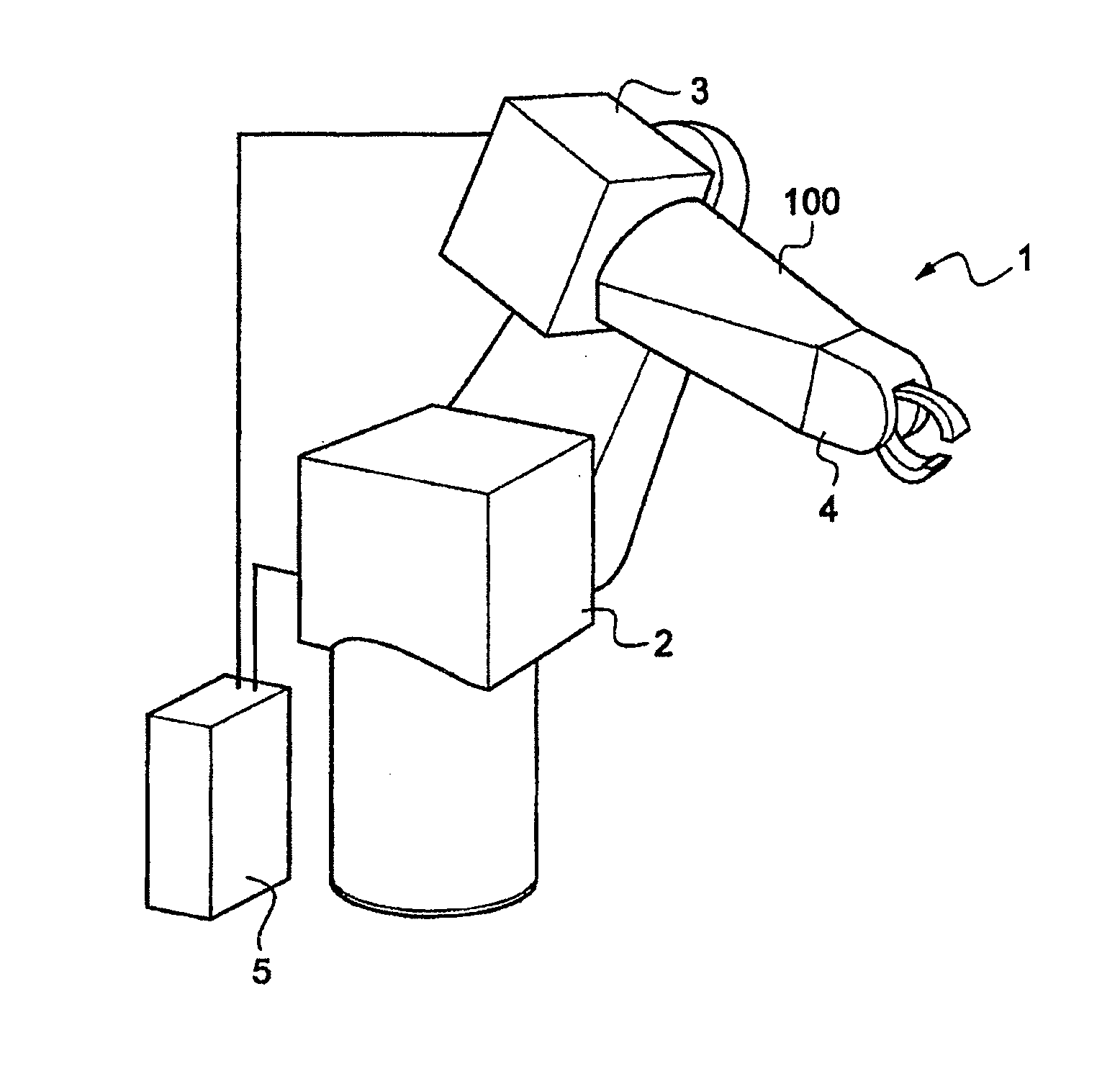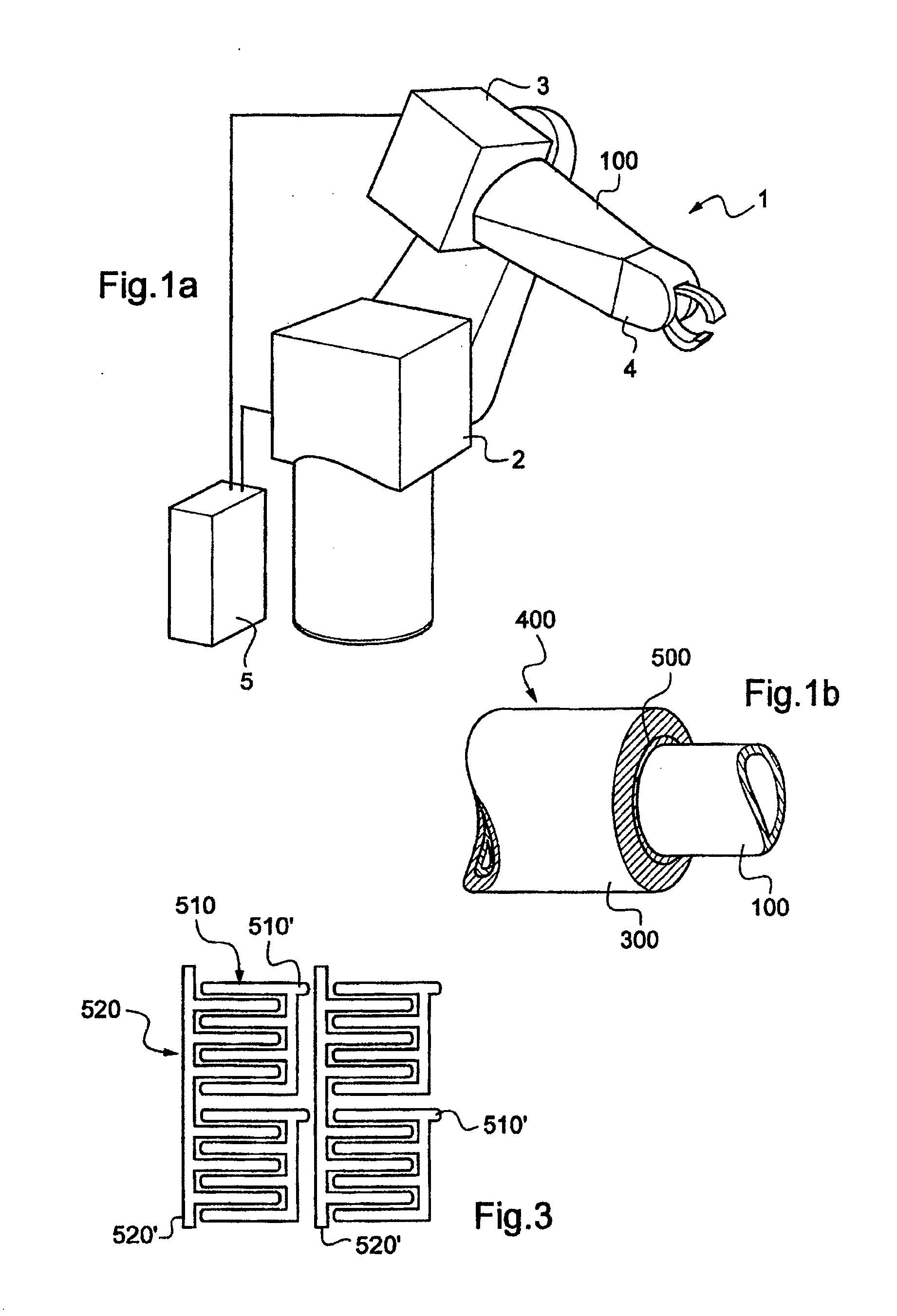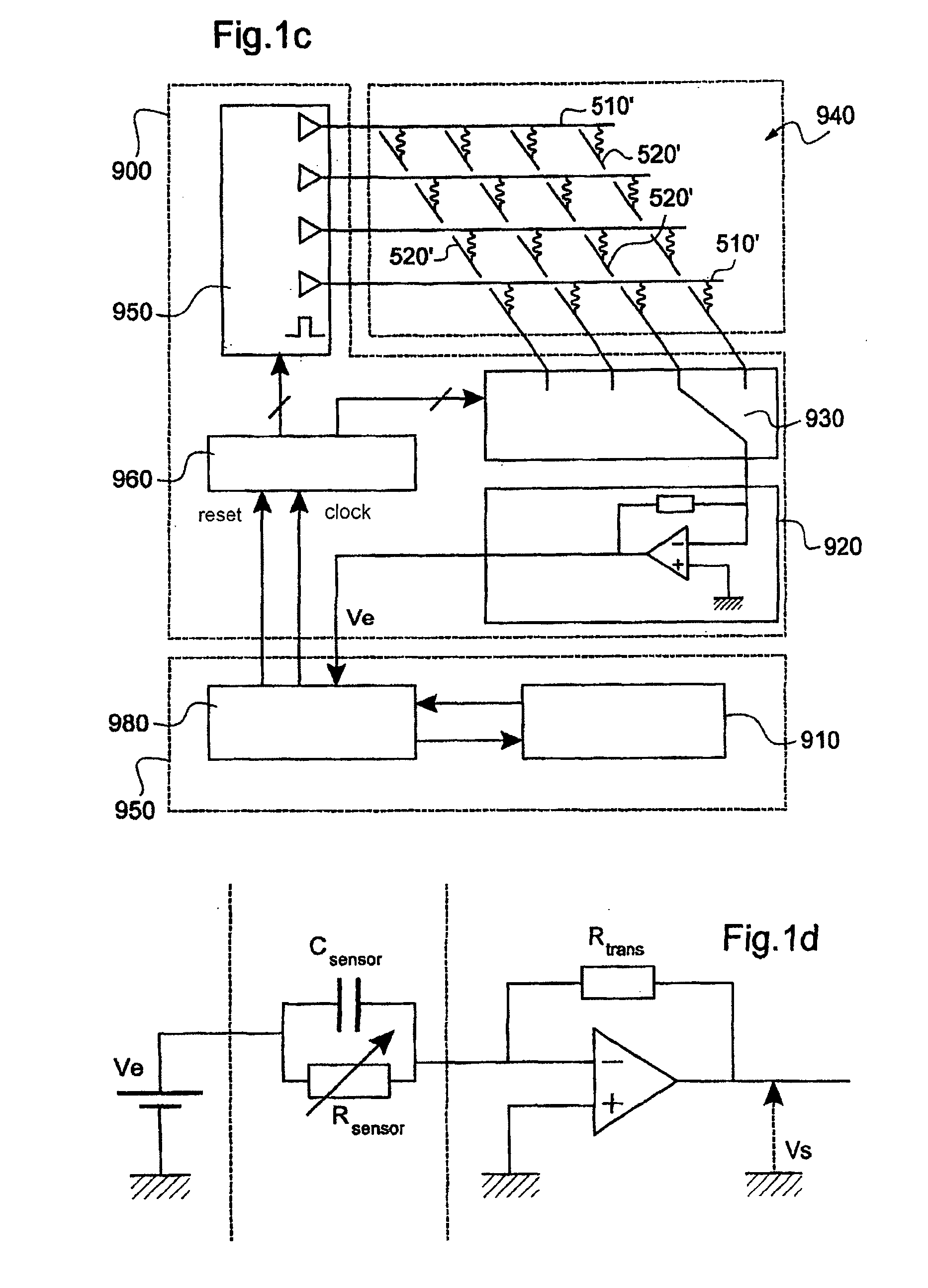Protective skin for robots
a technology for protecting skins and robots, applied in the direction of instrumentation, converting sensor output, program control, etc., can solve the problems of affecting the safety of robots, so as to reduce the consequences of an impact with the operator or the environment, reduce the cost of materials, and reduce the effect of production cos
- Summary
- Abstract
- Description
- Claims
- Application Information
AI Technical Summary
Benefits of technology
Problems solved by technology
Method used
Image
Examples
Embodiment Construction
FIG. 1a is a perspective view of a standard robot 1 on which the detector device of the invention may be mounted.
The robot includes a motorized structure having motors 2, 3, and 4 connected to a control unit 5 executing a computer program controlling the motorized structure. Here the motorized structure includes a robot arm 100 having an exterior surface with at least a portion thereof covered by a detector device 400 of the invention that forms a skin on the robot arm.
The device 400 includes an electromechanical transducer 500 covering the exterior surface of the robot arm 100 and including a substrate 550 provided with electrodes 510, 520 and covered by a deformable layer 300.
The transducer is shown in detail in FIG. 2. The substrate 550 of the electromechanical transducer 500 includes a flexible base layer 551 on which the electrodes 510, 520 lie, a variable conduction layer 552 covering the base layer 551 and the electrodes 510, 520, a conductive layer 553 covering the variable ...
PUM
| Property | Measurement | Unit |
|---|---|---|
| speed | aaaaa | aaaaa |
| thickness | aaaaa | aaaaa |
| time | aaaaa | aaaaa |
Abstract
Description
Claims
Application Information
 Login to View More
Login to View More - R&D
- Intellectual Property
- Life Sciences
- Materials
- Tech Scout
- Unparalleled Data Quality
- Higher Quality Content
- 60% Fewer Hallucinations
Browse by: Latest US Patents, China's latest patents, Technical Efficacy Thesaurus, Application Domain, Technology Topic, Popular Technical Reports.
© 2025 PatSnap. All rights reserved.Legal|Privacy policy|Modern Slavery Act Transparency Statement|Sitemap|About US| Contact US: help@patsnap.com



